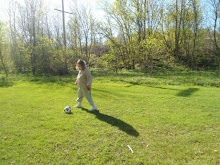With the basics of our collaboration set, we moved on with our ideas. Several emails back and forth helped to establish the basic storyline, though we still didn’t know how it would end. It still seemed a little predictable in some respects, but we decided to work on developing the characters and go from there. We were just in the beginning stages. Anything could happen from there.
I had already developed some solid character worksheets for my writing course, which I’ve made available on my website. http://www.the-writers-craft.com/creative-writing-worksheets.html
However, I’d also recently started using Liquid Story Binder and loved the visual aspect of planning and laying out my story with it. But my writing partner didn’t use this program. I wanted to come up with a way to incorporate the same type of visual aspect into an MS Word document.

I found it amazing how much easier it was to visualize the story if I spent the time needed to track down pictures of actors and places that could represent my characters and settings. It may seem like a huge waste of time while you are searching for images to fit the idea you have for a character, but think of it as casting your story in a movie format.
I went to Google Images and searched for different actors and actresses and downloaded them to a characters folder. Then I just placed a few pictures onto my character charts. It turned out to be an amazing help.
Sometimes, the characters even developed partially from the pictures I found. I’ll paste one sketch here as an example to illustrate what I mean. This is the sketch for the 17 year old son of one of the twins.
This format allowed me to get into each character’s back story and motivation. So, I filled out the charts with as much information as I could for our main characters and several of the secondary characters. Then I sent them off to Pat and she filled in the places I hadn’t and brought up any issues she had with the character.
It was amazing to see just how much of the story materialized from the character sketches. The story began to grow from the different characters’ back stories, right before our eyes.
I’ve always advised my students to do character charts and I’ve always done them for my main characters, but I’ve never done as many as I did for this story and never in so much detail. But, being a collaboration, I felt that we needed to have a stronger sense of the characters and plot so that we didn’t lose our way in the writing.
It’s so easy to veer off course and find yourself rambling down some tangent. Of course you have the writing partner to rein you in again, but it saves a lot of time and energy to plot your course ahead of time.
So having the characters set, we proceeded to decide on our story’s point of view (POV).
Point of View (POV)
I’ve read a good deal of women’s fiction and one thing that I really don’t like is when the author uses the omniscient or limited omniscient POV. In particular, I hate to be taken out one of the main character’s viewpoint during a scene—especially an emotional scene—and put into the head of some bit character.
I remember one story where the main character was in major crisis, her whole world unraveling around her, and the author took us out of the main characters tortured state and put us into the maid’s head to show us the character through the maid’s eyes. And we’re talking about a really popular author here (whose name I won’t mention, so don’t ask). At that point I was ready to toss the book into the nearest recycle bin and I probably did.
Taking us out of the main character’s viewpoint to put us into some bit character’s head destroys the intimacy that you’ve built between the character and reader. (Stepping off soap box now).
Okay, so it was important to me to tell the story through as few characters as possible. We each chose a twin’s viewpoint to write. That’s two viewpoints—one for Danielle and one for Rachel. I also love to see the viewpoint of the romantic interest in a story, so we included these as well, as secondary viewpoints—one for Leonides and one for Edward.
So we have four viewpoints through which to tell the story and the only criteria that’s important to me is that we stick with one character at a time and make it clear whose head we are in. We can change it during a scene even, but the reader needs to be completely certain who is speaking at all times.
There are scenes necessary to the story in which none of these characters plays a part. They are very few so far and we keep them short. We decided that these scenes should be told in a more distant narrator’s viewpoint. We wouldn’t be in the head of either character. We would tell these scenes as though we were a fly on the wall, observing the scene, but not experiencing the emotions that went with it.
We now had our characters set up as well as our general settings and had decided on our viewpoints. It was time to start writing.
Download Liquid Story Binder 30 Day Free Trial
I’ve tried a lot of writing programs and this is by far the most useful. And the 30 day trial is non-consecutive so you get to actually use the program on 30 days even if those days are only twice a week before you have to buy it. Give it a try!





No comments:
Post a Comment